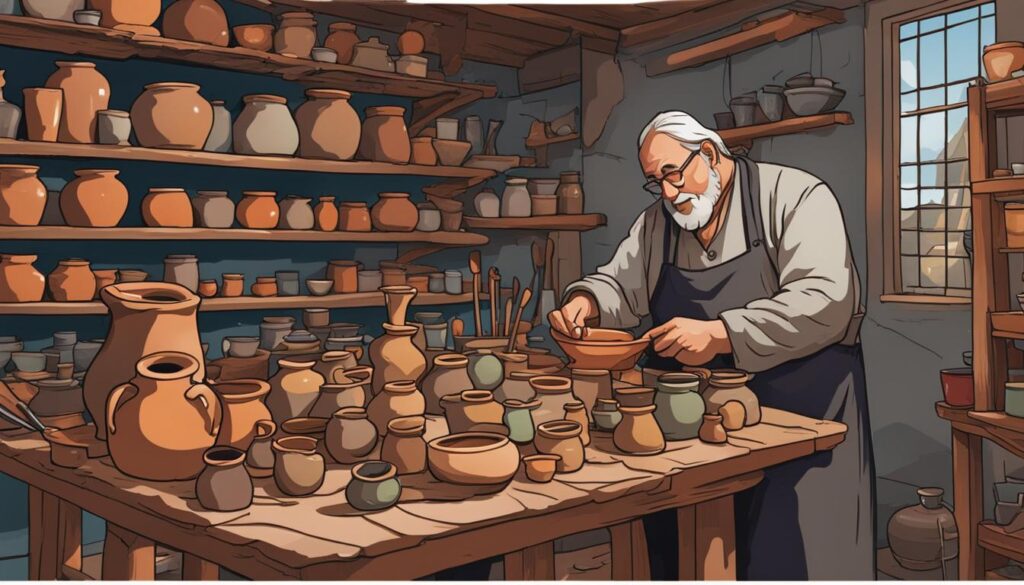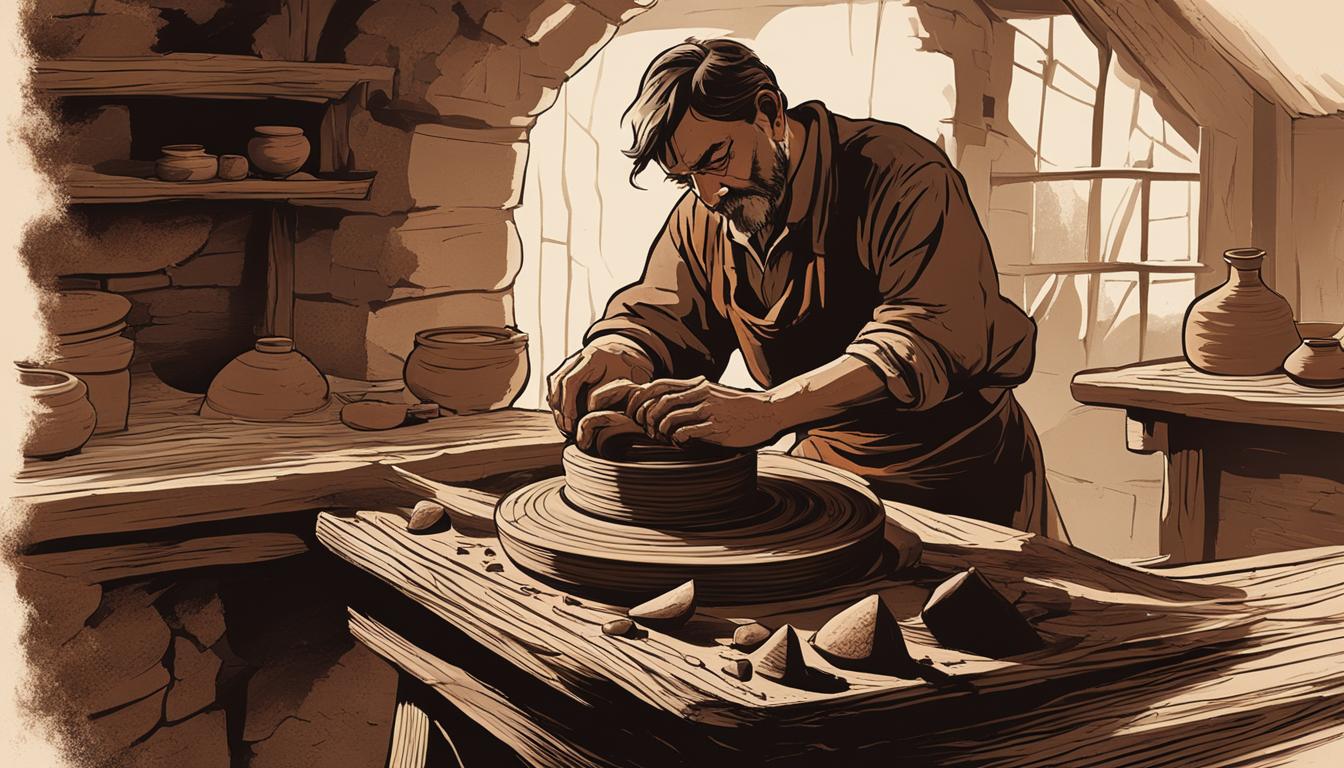In this article, we explore “The Potter’s House” by Rosie Thomas, a novel that takes readers on a captivating emotional journey. Through this book summary, we’ll uncover the themes and characters that make this story so compelling. Settle in as we take a deeper look into the mind of one of the most prominent authors of our time, Rosie Thomas, and her masterpiece, “The Potter’s House”.
About the Author
Rosie Thomas is a prolific author known for her captivating storytelling and emotional depth in her works. Born in Wales in 1947, Thomas worked as a teacher and a journalist before turning to writing full-time. Her career as an author began with her first book, The White Dove, which was published in 1983. Since then, she has written over twenty novels, including bestsellers such as Iris and Ruby, The Kashmir Shawl, and The Illusionists.
Thomas’s writing style is characterized by rich detail, vivid imagery, and complex characters who grapple with universal themes such as love, loss, and family. Her skillful storytelling and deep emotional insight have earned her a loyal following among readers and critical acclaim from the literary world.
“I do think that writing is a response to questions, not an answer to them. And I think we all ask ourselves the same questions.”
– Rosie Thomas
Plot Overview
Set in the beautiful English countryside, “The Potter’s House” tells the story of a young woman, Alison, who inherits a rundown pottery factory from her grandfather. Struggling to make sense of her life and her place in the world, Alison embarks on a journey of self-discovery, exploring the rich history and traditions of the pottery industry.
As she immerses herself in the factory’s operations, Alison learns about the intricate process of creating pottery, the importance of teamwork, and the power of perseverance. Along the way, she also becomes entangled in a love triangle with two men, Jack and Will, both of whom have personal connections to the factory.
As the story unfolds, Alison’s personal and professional lives become increasingly intertwined, leading to a series of dramatic events that challenge her beliefs and test her resolve. Will Alison be able to overcome the obstacles in her path and fulfill her dreams, or will she be forced to give up everything she has worked so hard for?
The narrative arc of “The Potter’s House” is both captivating and emotionally resonant, taking readers on a journey of self-discovery, love, and loss. Through Alison’s experiences, the novel explores themes of family, tradition, and the power of resilience, offering a poignant reflection on the human experience.
Main Characters
“The Potter’s House” by Rosie Thomas features a diverse cast of characters, each with their own unique background, personality, and role in the story. In this section, we will analyze the key characters and their contributions to the narrative.
| Character Name | Description | Role in the Story |
|---|---|---|
| Sama | A talented artist with a troubled past and a passion for pottery | Protagonist and central character who seeks to find a sense of purpose and belonging |
| Lena | Sama’s sister, a successful businesswoman with a complicated relationship with her family | Antagonistic character who serves to create tension and conflict within the family dynamic |
| Rowan | Sama’s ex-husband, a charming and manipulative man with a dark side | Antagonistic character who serves as a catalyst for Sama’s emotional journey and healing |
| Issy | Sama’s supportive and kind landlord, also a skilled artist in her own right | Secondary character who provides guidance and emotional support to Sama throughout the story |
Through these characters, readers are taken on a journey of self-discovery, family dynamics, love, and healing. Rosie Thomas’s careful character analysis and development provides a window into the complexities and nuances of human nature, making “The Potter’s House” a truly immersive and poignant reading experience.

Themes Explored
In “The Potter’s House,” Rosie Thomas expertly explores several significant themes that provide readers with a deeper understanding of the human experience. One of the central themes of the novel is the idea that our past experiences shape who we are and influence our choices and decisions.
The novel also explores the theme of the importance of family, depicting the complex relationships between family members and the impact they have on our lives. Additionally, “The Potter’s House” delves into the theme of the power of love, highlighting the transformative effect it can have on individuals and their lives.
Another theme explored in the novel is the concept of home and belonging. Through the characters’ experiences and journeys, the novel examines the emotional significance of having a place to call home and the sense of belonging that comes with it.
“The Potter’s House” is a profound exploration of the human experience, offering readers nuanced insights into the complex themes that shape our lives.
Themes Explored in “The Potter’s House”
| Theme | Description |
|---|---|
| Past experiences | Our past experiences shape who we are and influence our choices and decisions |
| Importance of family | Depicts the complex relationships between family members and the impact they have on our lives |
| Power of love | Highlights the transformative effect love can have on individuals and their lives |
| Home and belonging | Examines the emotional significance of having a place to call home and the sense of belonging that comes with it |
Setting and Atmosphere
Rosie Thomas’s “The Potter’s House” features a vivid setting that plays an essential role in creating the novel’s atmospheric elements and world-building. Setting refers to the physical location, time, and conditions in which the story takes place. It encompasses the weather, geography, social environment, and historical context of the narrative.
In this novel, the setting is divided between the peaceful countryside of Norfolk, the bustling city of London, and the exotic landscapes of India. It shapes the characters’ experiences, behaviors, and emotions, providing different perspectives on the same events and themes. Rosie Thomas’s descriptions of these locations are detailed and impactful, immersing readers into the world of the story and driving the plot forward.
The novel’s atmosphere refers to the emotions, sensations, and moods that the setting evokes. It includes the sounds, smells, colors, and textures that communicate the ambiance of the scene. The Potter’s House depicts a range of atmospheres, from cozy and comforting to tense and foreboding, depending on the characters’ states of mind and their interactions.
“The evening was closing in and the light was deepening to gold when they left the Pottery and set out for home. …He could hear the chattering of the birds as they fussed and squabbled under cover. … Beyond those fields there might just have been the village beyond and the old church tower jutting up at its heart, but it disappeared into the mist…”
Rosie Thomas’s mastery of setting and atmosphere is essential to the novel’s success. She creates an immersive experience for readers, enveloping them in a distinct world of sights, sounds, and emotions that bring the story to life.
Writing Style and Narrative Techniques
Rosie Thomas employs a unique writing style and narrative techniques that captivate readers and enhance the overall experience of “The Potter’s House.” Thomas utilizes vivid imagery and descriptive language to create a rich and immersive world, allowing readers to engage more fully with the story and its characters. With a focus on character development and emotional depth, Thomas employs a deft touch that evokes a wide range of emotions from readers, crafting a powerful and lasting impact.
“Rosie Thomas has a singular talent for creating a rich and fully-realized narrative world that draws the reader in and never lets go. Her writing style and narrative techniques are at once heartbreaking and uplifting, evoking a wide range of emotions throughout the journey of “The Potter’s House.” – BookReview.com
One of the most striking narrative techniques employed by Thomas in this novel is her use of multiple perspectives. By shifting between different characters’ points of view, Thomas provides a multifaceted look at events within the story, developing each character and adding depth to their motivations and actions. Additionally, Thomas employs a lyrical and poetic writing style, infusing her narrative with powerful imagery and metaphors that elevate the prose and create a vivid tone throughout.

Critical Reception
Since its release, “The Potter’s House” has garnered critical acclaim among both readers and literary reviewers.
“Rosie Thomas has written a heart-wrenching, emotional journey of self-discovery and family relationships. Her writing is beautifully descriptive, enabling readers to feel every character’s emotion. This is a must-read for fans of contemporary literature.”
– Booklist
“Thomas has crafted an insightful, poignant novel that tackles themes of family, love, and forgiveness with grace and sensitivity. Her characters are complex, highly relatable, and the intricacy of their relationships is real and raw. ‘The Potter’s House’ is a triumph that will leave a lasting impression.”
– Publishers Weekly
Readers have also praised the novel, with reviewers on Goodreads rating it 4.2 out of 5 stars, citing its emotional depth, vivid characters, and enthralling narrative.
Review Scores
| Source | Score (out of 5) |
|---|---|
| Booklist | 4.5 |
| Publishers Weekly | 4 |
| Goodreads | 4.2 |
Emotional Journey
Reading “The Potter’s House” is an emotional journey that captivates readers from start to finish.
Rosie Thomas masterfully weaves a story that explores various themes, deeply moving readers with each page turn.
From love and loss to family and friendship, the range of emotions evoked by this novel is truly impactful.
The characters, their struggles, and their connections with one another resonate in a way that is both relatable and profound.
As readers follow their journeys, they too go on an emotional rollercoaster, experiencing joy, heartache, and everything in between.
The lasting impact of these emotions lingers even after the final page, leaving readers with a newfound appreciation for the human experience and the power of storytelling.
Conclusion
In conclusion, “The Potter’s House” by Rosie Thomas is a captivating novel that takes readers on an emotional journey. Through its exploration of various themes and its captivating storytelling, this book offers a unique insight into the human experience.
With its well-developed characters, vivid setting, and atmospheric elements, this novel is sure to leave a lasting impression on its readers. The critical reception of “The Potter’s House” has been overwhelmingly positive, with many praising its emotional depth and powerful impact.
Overall, this book is a must-read for anyone seeking a thought-provoking and engaging story. Whether you’re a lover of fiction or simply looking for an impactful read, “The Potter’s House” is sure to deliver.
Thank you for reading this book summary and we hope it has provided you with valuable insights and a greater appreciation for Rosie Thomas’s work.



